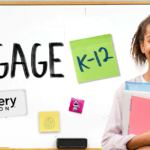By Beth Holland and Hali Larkins
Published in the Nov/Dec 2021 issue of Equity & Access PreK-12
The demand for technology in learning has never been more pressing than in our current time. Spurred by the necessity to implement remote learning and newly available federal funding for internet and broadband access, this school year has the potential to become the most technological in the history of education in the United States. However, before celebrating these prospects, it is important to take a pause and recognize a critical concept: equal access is not the same thing as digital equity.
What is Access? A Spotlight on the Digital Divide
The acknowledgement of gaps in internet access is commonly referred to as “the digital divide.” In 1995, Larry Irving – then administrator at the National Telecommunications and Information Administration (NTIA) – first documented the existence of the digital divide in a report that he commissioned called Falling through the Net. Despite this initial spotlight, its severity has only recently been realized due to disruptions caused by the global pandemic. In Spring 2020, over 15 million students were excluded from remote learning because of lack of access. In response, districts worked tirelessly to close 20 to 40 percent of the reported gaps. However, studies have found that despite such efforts, over 12 million students lacked sufficient internet access this past year.
A recent report from New America, Learning at Home While Under-Connected, provides additional context. Researchers Vikki Katz and Victoria Rideout shared:
- 1 in 7 students remain unconnected to the internet.
- 53 percent of “connected” participants reported being under-connected. Their devices or internet proved to be too slow for full participation in online learning, or students were hindered by data caps that cut them off from schooling.
- 35 percent indicated that cost remained the biggest barrier; yet, 19 percent of survey respondents from low-income communities indicated that they did not perceive a need for a computer or internet access even though they had a school-aged child in the house.
Such insights indicate that the issues surrounding the digital divide are far more nuanced, and much more work remains to be done. For example, a 2021 study from Common Sense Media, Boston Consulting Group, and the Southern Education Foundation reported that low digital literacy skills, language proficiency, and general confusion around available services created additional barriers – particularly for families in underserved communities. These more nuanced challenges raise broader questions around equity, such as representation, digital and media literacy, language, education level, and cultural background.
What is Equity? Access vs. Adoption
Keep reading this article on page 6 of the Nov/Dec 2021 issue of Equity & Access PreK-12.
The American Consortium for Equity in Education, publisher of the "Equity & Access" journal, celebrates and connects the educators, associations, community partners and industry leaders who are working to solve problems and create a more equitable environment for historically underserved pre K-12 students throughout the United States.
- American Consortium for Equity in Educationhttps://ace-ed.org/author/admin/
- American Consortium for Equity in Educationhttps://ace-ed.org/author/admin/April 23, 2025
- American Consortium for Equity in Educationhttps://ace-ed.org/author/admin/
- American Consortium for Equity in Educationhttps://ace-ed.org/author/admin/







